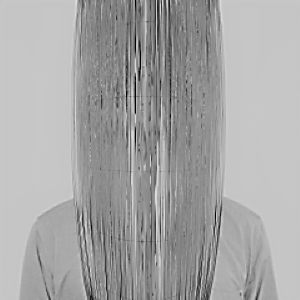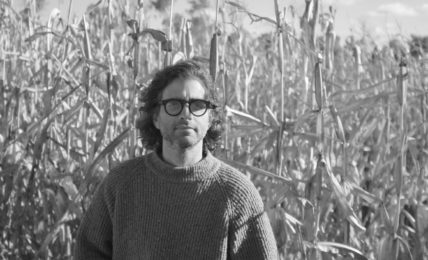Digital America interviewed Damon Pham in April 2021 to discuss his net.art piece New Leaf (2020) and the unique sentiments of nostalgia and vulnerability expressed in digital spaces.
:::
DigA: In your piece New Leaf you discuss how the hourly Animal Crossing music elicits nostalgic memories in the YouTube commenters. What inspired you to create this work? Do you have any personal memories associated with the music?
DP: That’s the funny thing: I’ve actually never played any of the Animal Crossing games before! My boyfriend showed me a couple songs from the New Leaf soundtrack, and I thought they would be nice to listen to while studying. I have a habit of peeking at the comments section wherever I am—Youtube, news articles, social media, etc.—so when I visited one of the Animal Crossing soundtrack uploads, I probably encountered a few comments that fascinated me, leading me to explore this body of text further.
I say “body of text” because I’m interested in thinking of these commenters as a collective, a community… a village if you will. What are the shared sentiments and memories being voiced by these speakers as a whole? Training a generative language model on what they say, and then creating new instances of their speech using it, is a fun way to answer that question. I’ve taken a similar approach previously when I used a Markov chain model to explore UFO sightings reports, which led to my short story “My Daughter Was Abducted by Aliens.” [This link is no longer available] For “New Leaf” I used GPT-2 instead. In terms of input and output, these models are kind of like filters: specifics of the original data are lost, but some features, like syntactical “shape” and vocabulary, are clarified. Since they introduce artifacts to the language, they also add their own flavor; it’s hallucinatory and paranoid in “My Daughter Was Abducted by Aliens” and startling and child-like in “new leaf.”
Now, the analogy of a filter is strained by more advanced generative models like GPT-3, due to not only their greater synthetic realism but also their ethical stakes. People are rightfully worried about use cases like fake news generation, which freaks me out too because I don’t think we’re going to develop the necessary skepticism fast enough, as a society. But our fear of these generative models often manifests itself in an unhelpful Terminator-style personification of them. I often stress that these models don’t really “speak” or “learn.” They are just computer code written and deployed by humans, and ascribing consciousness to them (when talking seriously about philosophy or ethics) only obfuscates this fact.
Alright, that’s my obligatory rant! Anyway, I deliberately chose GPT-2 instead of the more advanced models so that I could avoid associations with AI ethics, futurity, etc. For this project I wanted to dive deep into nostalgia instead, to dilate the delight of stumbling upon all these unexpected emotions in YouTube comments about a video game.
DigA: In New Leaf you mention how the semi-anonymous environment of a YouTube comments section has the potential to cultivate positive displays of vulnerability. Can you speak more to why you believe this comes about in the context of animal crossing? What is unique about this space that allows people to connect in this way?
DP: Yeah, I think vulnerability is nurtured by both the game (Animal Crossing: New Leaf) and the platform (Youtube). Animal Crossing is a sweet game that most people derive enjoyment from by being immersed in its world, and for teens and adults this suspension of disbelief requires a particular kind of vulnerability. And YouTube’s semi-anonymity semi-shields people from the risks that come with expressing vulnerability in other spaces, like being made fun of or placing others in an awkward position to respond.
On the flip side, it’s also possible that some people are expressing vulnerability just to participate in the dominant discourse, perhaps for “likes.” I saw this suspicion being voiced by several commenters. A similarly skeptical statement even ended up in the GPT-2 output: “This comment section seems like it could be a stage play.”
DigA: Could you speak more on your process of curating which comments to incorporate into your piece for each hour? More specifically, you discuss how YouTube comments sections are notorious for being a breeding ground for negative and offensive comments. How do you go about filtering out these negative comments, and by excluding such comments do you feel you make the piece less authentic in any way?
DP: Well I was initially drawn to these comments because the ones I saw were surprisingly positive and wholesome. That being said, as I dove deeper into the entire corpus I did find some very questionable content…! Mature themes didn’t fit the heartwarming tone I had in mind for this project, so I got rid of them. I first used a profanity library in Python to screen out explicit language before training the model. Nonetheless, inappropriate phrases invariably got into the training data, the GPT-2 algorithm previously encountered explicit language, and moreover, innocuous words sometimes combined in disturbing ways. So I generated a ton of comments and combed through to select only my favorites. This last step of curation actually exerted the most influence on the final result, since I also sought out comments that were diverse, poetic, and surprising.
With “new leaf” I tried to shed light on a particular subjective mode, rather than present an all-encompassing data visualization. Yes, each of the aforementioned creative decisions took the project further away from the “full truth.” But they also took me closer to the artistic experience I aimed to provide. Returning to the analogy of a filter, it’s like playing with coloring, white balance, and spatial transformations to tweak the mood of a photograph.
DigA: Since the start of the COVID-19 pandemic, there has been a resurgence of people revisiting games such as Animal Crossing. Were you at all inspired or compelled by this trend in the creation of your piece?
DP: Yeah, I noticed many of my peers playing “Animal Crossing: New Horizons” in the beginning of the pandemic! I wasn’t inspired or compelled by that surge of interest per se, but the existence of a newer version of Animal Crossing, New Horizons, underscores the nostalgia of the older version, New Leaf. Also, exploring an older version of the game parallels the choice to use an older version of the GPT algorithm.
COVID-19 affected this project in another way. During quarantine I’ve had very few scheduled plans, so my sleep cycle has been irregular. Thus, it was particularly rewarding to revisit my own memories of different hours of the day: how they feel, and what special events they used to contain in previous years, like getting home from school (3-4 PM) or catching a summer sunrise (6-7 AM). I’ve also enjoyed visiting the webpage myself, since I’ve forgotten most of the comments!
DigA: How does your technical background influence and inspire your artistic process, both in New Leaf and in your other work? In what way do you feel computer science and art combine as a unique and potent medium to offer a commentary on digital culture?
DP: In my creative practice I’m often probing human emotions, experiences, and beliefs. So the “feeling” I want to chase usually comes first, and most of the time computing is just a means to that end. I use computer technology because it’s the medium I’m most fluent with, both in terms of its technical interface as well as its historical and cultural reference points. I do agree that it has some unique capabilities compared to more traditional art mediums. One is that you can aggregate lots of data/media efficiently. This is helpful when working with large collections of things, as I am in this project. Making connections between our individual and societal realities is also something that comes up in my scientific practice too, since I work a lot with statistics.
DigA: Can you discuss some of your other work that you feel particularly inspired by? What are you working on currently?
DP: I’m focusing on audio these days! My big project is an EP about the boredom, hyperstimulation, loneliness, and desire incubated by the attention economy-ecology we’re surrounded by. I know it’s a cliche object of criticism (especially in media art), but I think we still aren’t upset enough about it, and this project will be my way of presenting my argument. It’ll also be a chance to play with the overlaps of poetry, music, field recording, and collage, which have interested me throughout my life. I hope to share this project with you all soon!
:::
Check out Damon Pham’s piece New Leaf
:::

Damon Pham works with time-varying media: sound, video, and the web. He graduated from Indiana University with a major in statistics and minor in computer art. His recent interests include collective voices and the experience of addiction.



